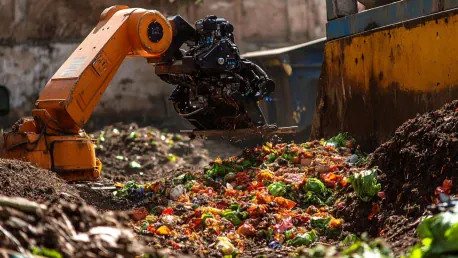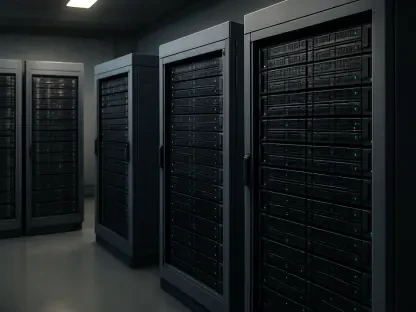The waste management industry has seen significant advancements with the integration of artificial intelligence (AI) and robotics. These technologies promise to enhance efficiency and safety by taking over hazardous jobs. However, their effectiveness in complex tasks like compost sorting remains under scrutiny. This article explores the current state of AI-powered robots in compost sorting, focusing on the trials conducted by Atlas Organics.
The Promise of AI and Robotics in Waste Management
Technological Advancements and Initial Trials
AI and robotics have made notable strides in various sectors, including waste management. The initial promise was that these technologies could handle repetitive and hazardous tasks more efficiently than humans. Atlas Organics, a key player in the composting industry, embarked on a journey to test AI-powered robots at their San Antonio site. Their goal was to evaluate whether these robots could match or surpass human workers in sorting compost materials.
In 2021, Atlas Organics installed robotic units to assist in compost sorting. The initial results were promising but lacked significant groundbreaking improvements. The robots achieved a picking success rate of 55%, translating to approximately 4.2 successful picks out of 7.7 attempts per minute. While these numbers indicated potential, they also highlighted significant room for improvement. This initial data laid the foundation for further analysis and trials to better understand the capabilities of AI and robotic technology in waste sorting applications.
Early Performance Metrics
Early trials aimed to gauge the effectiveness of AI-powered robots in the compost sorting process and identify areas for improvement. The 2021 trials represented a preliminary attempt to integrate these technologies into an industry marked by the complexity and variability of waste streams. Despite the robots’ ability to successfully pick compost materials, their performance was far from matching the speed and precision of human workers.
Atlas Organics saw the 55% picking success rate as a starting point rather than a final outcome. This metric served to underscore both the potential and limitations of current robotic technology. It became evident that while AI and robotics could contribute significantly to certain aspects of waste management, achieving the level of efficiency and accuracy necessary for complex tasks like compost sorting would require much more refinement and innovation. Continued evaluations and adjustments aimed at pinpointing the precise shortcomings of robotic units would be necessary to move closer to the technology’s full potential.
Comparative Analysis: Humans vs. Robots
2023 Trials and Findings
In 2023, Atlas Organics conducted further trials to compare the performance of robots and human workers in removing contaminants from compost. The results were telling. Over a two-minute observation period, robots averaged 16.8 successful picks, while human workers achieved a significantly higher average of 34.6 successful picks. This stark difference underscored the current limitations of robotic technology in complex sorting tasks, revealing that AI-powered robots still have a long way to go before they can replace human workers.
The human workers’ superior performance highlighted the adaptability and fine motor skills that robots currently lack. These trials were instrumental in determining the specific areas where robotic pickers were falling short and the reasons behind their inadequacies. More importantly, the data showed that while robots could increase picking speed, their accuracy remained stagnant. Human workers were not only faster but also more precise in identifying and segregating diverse compost materials, a crucial advantage in maintaining the quality and sustainability of compost processing operations.
Specific Contaminant Removal
Another focus of the 2023 trials was the types of contaminants removed by robots and humans. Robots showed a preference for fiber materials and were most effective at removing plastic. However, humans outperformed robots in removing a broader range of contaminants, including glass and metals. In scenarios where both robots and humans worked together, human workers consistently removed more contaminants, proving their superior efficiency and accuracy.
The ability of human workers to handle varied contaminants more effectively than robots had significant implications for the composting process. For instance, plastic contamination is a major concern, and while robots showed some capability in this area, they struggled with identifying and removing other materials like glass and metals. This limitation hindered the robots’ overall effectiveness and necessitated human intervention to achieve acceptable results. As a result, it was clear that a hybrid approach combining the strengths of both humans and robots would be essential for optimizing the efficiency and accuracy of compost sorting.
Challenges and Limitations of Robotic Sorting
Handling Varied Materials
One of the primary challenges faced by AI-powered robots is handling the variety of materials found in compost. Unlike humans, robots struggle with the nuances of different textures, shapes, and sizes. This limitation significantly impacts their effectiveness in sorting tasks that require meticulous attention to detail. Human workers can easily discern and separate diverse materials, while robots often misidentify or fail to pick up certain items, leading to higher contamination rates and decreased overall efficiency.
Moreover, the integration of robots into the compost sorting process requires them to adapt to varying waste streams—a challenge that current AI technology has not yet fully mastered. Each batch of compost can present unique challenges, from different types of organic matter to unexpected contaminants. Robots often fail to adapt quickly to these changes, while human workers can adjust on the fly. This discrepancy in adaptability further illustrates the need for advancements in AI algorithms and machine learning to improve the capability of robots to handle the complexities of compost sorting.
Downtime and Maintenance Issues
Another critical issue is the downtime associated with robotic units. During the trials, robots accounted for 29% of the downtime, which was a significant hindrance to their overall efficiency. Factors contributing to this downtime included mechanical failures and the robots’ inability to adapt to unexpected changes in the waste stream. Such downtime not only hampers productivity but also increases maintenance costs and operational disruptions.
Mechanical failures among robotic units were common, underscoring the need for more robust and reliable machinery. Additionally, the robots’ inability to cope with unexpected variations in compost materials led to frequent stoppages, further reducing their efficiency. These challenges highlight that while AI-powered robots have the potential to revolutionize waste management, significant improvements in their reliability, robustness, and adaptability are required to ensure they can operate effectively without causing undue interruptions.
The Human Element in Compost Sorting
Superior Judgment and Adaptability
Human workers bring a level of judgment and adaptability that current robotic technology cannot match. The ability to quickly identify and sort a wide range of materials is a crucial advantage that humans have over robots. This adaptability is particularly important in compost sorting, where the waste stream can vary significantly from one batch to another. Utilizing human workers ensures that the sorting process remains efficient and accurate, maintaining the quality of the compost produced.
The trials conducted by Atlas Organics demonstrated that human judgment is invaluable when it comes to handling unexpected materials and adjusting to variations in compost. Human workers can rapidly distinguish between different types of contaminants and make the necessary adjustments to the sorting process, something that robots are currently unable to achieve with the same level of precision. This superior judgment and adaptability underscore the continued need for human involvement in compost sorting tasks, even as AI and robotics continue to advance.
Efficiency and Accuracy
The trials conducted by Atlas Organics clearly demonstrated that humans are more efficient and accurate in compost sorting tasks. With an average of 34.6 successful picks in two minutes, human workers outperformed robots by a wide margin. This efficiency is vital for maintaining the quality and sustainability of composting operations. Human workers’ ability to quickly and accurately identify and remove contaminants ensures a higher quality end product, which is essential for the success of composting programs.
The efficiency and accuracy of human workers were particularly evident in scenarios where both robots and humans collaborated. Even in these hybrid setups, human workers consistently removed more contaminants and did so more accurately than their robotic counterparts. This finding suggests that while robots can play a supportive role, they are not yet capable of fully replacing humans in compost sorting tasks. The combination of human judgment, adaptability, and meticulous attention to detail is crucial for achieving optimal results in the waste management industry.
Future Prospects and Innovations
Ongoing Technological Improvements
Despite the current limitations, the potential for AI and robotics in waste management remains significant. Ongoing technological improvements are expected to enhance the capabilities of robotic units, making them more effective in complex sorting tasks. Innovations in AI algorithms and robotic hardware could eventually bridge the gap between human and machine performance, paving the way for more efficient and sustainable waste management practices.
Developers are continually refining AI algorithms to improve robots’ ability to recognize and sort a wider range of materials accurately. Advances in machine learning and sensor technology could significantly enhance robots’ adaptability and precision, allowing them to handle the diverse and ever-changing waste streams found in composting operations. These technological improvements hold promise for the future, suggesting that robots could eventually play a more prominent role in compost sorting.
Hybrid Operations: A Balanced Approach
The most practical solution at present is a hybrid approach that leverages the strengths of both humans and robots. By combining human judgment and adaptability with the speed and consistency of robots, waste management companies can optimize their compost sorting operations. This approach allows for greater efficiency while ensuring that the nuanced aspects of sorting that robots currently struggle with are effectively managed by human workers. As AI and robotic technologies continue to improve, this balanced strategy will likely yield the best results in the short to medium term.
In conclusion, while AI-powered robots hold significant promise for the future of compost sorting, they are not yet ready to replace human workers entirely. Current trials and performance metrics show that humans still outperform robots in key areas such as adaptability, efficiency, and accuracy. However, ongoing technological advancements suggest that a hybrid approach, integrating both humans and robots, can offer a more immediate and effective solution for optimizing waste management practices.









